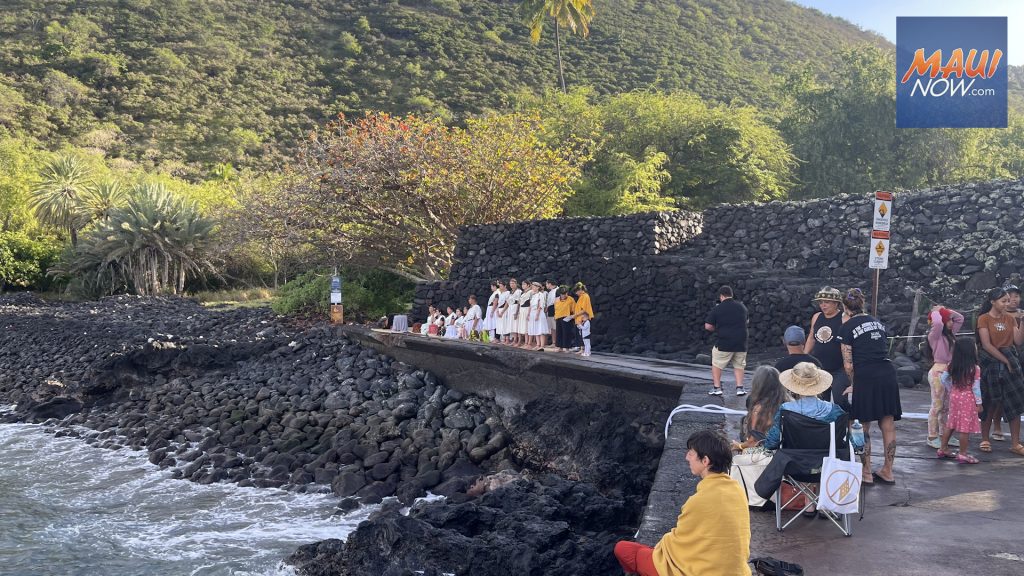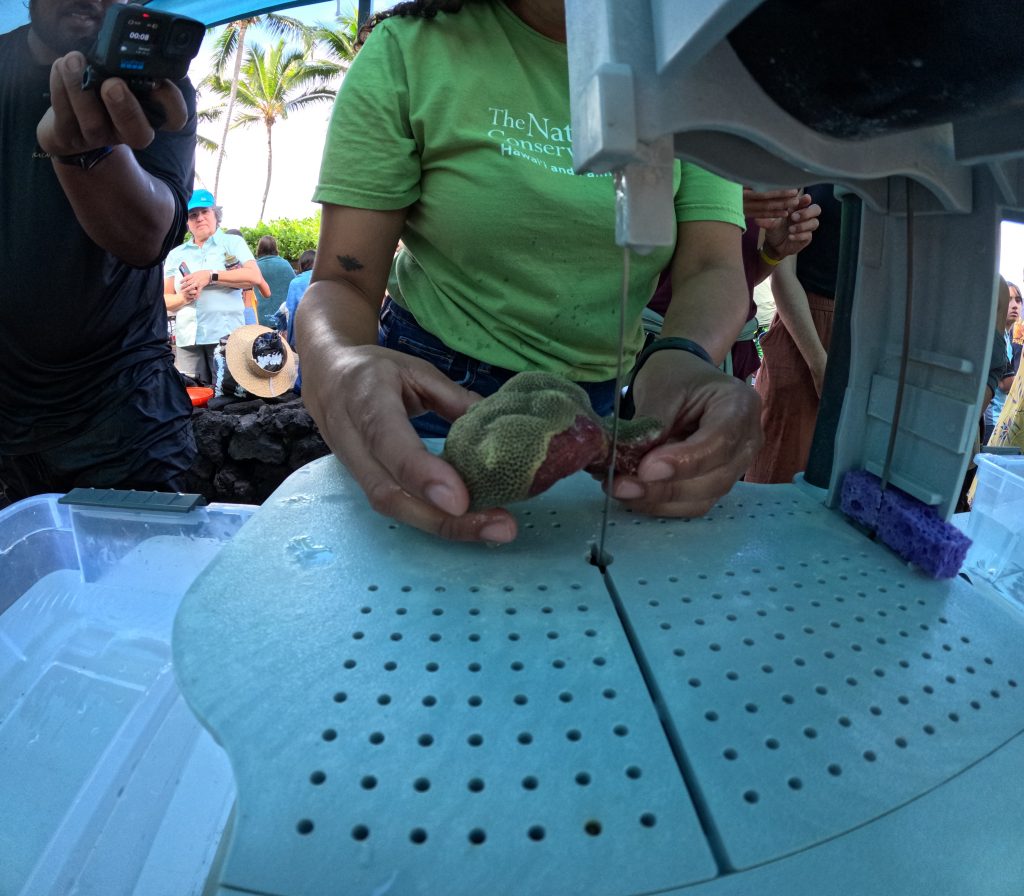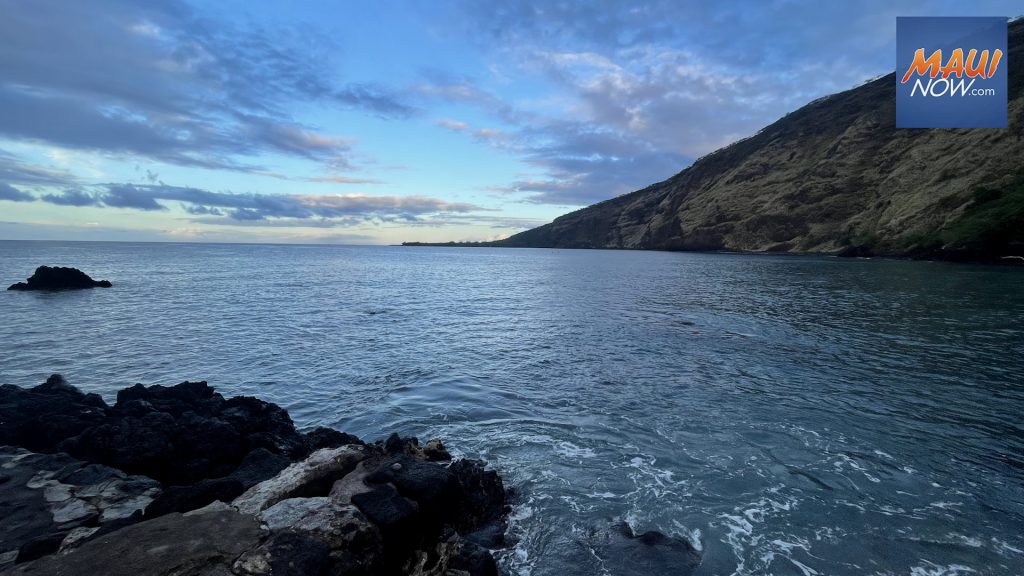Community-led coral restoration project at Kealakekua aimed at accelerating reef growth, recovery
The Hawai‘i Department of Land and Natural Resources Division of Aquatic Resources took part in a second collaborative coral restoration project over the weekend in the waters of Kealakekua Bay, on the Kona side of Hawai‘i Island.
The community led project named Kanu Ko‘a, integrates Hawaiian culture, the community, and the science of coral restoration. A ceremony held at the site emphasized ‘ohana (family) and relationships with ko‘a (corals).
The partnership of local community nonprofit, Hoʻāla Kealakekua Nui, The Nature Conservancy Hawai‘i and Palmyra, and the DLNR, organized the opening ceremony.
“Hānau ka ‘ukuko‘ako‘a, the worm or coral polyp, emerged from the lipolipo, the constant darkness where all forms begin,” said Shane Akoni Palacat-Nelsen, president of Hoʻāla Kealakekua Nui. “In the cosmogonic genealogy chant Kumulipo, the coral is mentioned as one of the first physical life forms that emerge, alluding that the coral is a foundational entity for all life forms. The ‘ukuko‘ako‘a is the regulator for ecosystems; without it, ecosystems are imbalanced. That’s why when our village received the distressing news that our coral is severely depleted in our bay, we took it very seriously and applied the kumu kānāwai kīhoʻihoʻi—the edict of regeneration—with modern scientific methodologies.”
At the morning event, project partners planted ko‘a in Kealakekua Bay, within the ahupuaʻa of Kealakekua and Kaʻawaloa. Kealakekua Bay is one of 11 Marine Life Conservation Districts in Hawai‘i.
Lineal descendants of Kealakekua along with TNC and DLNR/DAR divers collected pieces of ko‘a that had broken off during recent high swells and would otherwise have died. Ko‘a pieces were brought to shore on waʻa Kinikini, a double-hulled canoe.

Using specialized saws, the team and community members cut the collected pieces into one-inch fragments. Divers then transported the pieces back into the bay and attached them to the reef with epoxy, while community members watched from above.
Ko‘a pieces were planted in clusters, enabling them to grow together into a colony more quickly. All work with ko‘a is being conducted under a Special Activities Permit with DAR and is supported by the descendants and residents.

“Strong collaborations like the one we are building here represent our best chance to mitigate the vast and varied issues facing coral reefs in Hawai‘i,” said Chris Teague, a Hawai‘i Island-based DAR Aquatic Biologist. “By focusing on the restoration of corals as the foundation of these important habitats, this hui hopes to not only help rebuild Kealakekua’s coral reefs, but to catalyze additional restorative work both here and across Hawai‘i.”
“Working with and learning from the Kealakekua community has been a privilege,” said Julia Rose, TNC’s Coral Restoration Program Manager in a DLNR press release. “The work it is doing to restore and maintain the health of cultural and natural resources, including coral restoration, will help to perpetuate heritage, community, and environment in Kealakekua through the mounting pressures of climate change.”
Hoʻāla Kealakekua Nui has been instrumental in the planning, design, and implementation of the coral restoration project and building local community capacity in Kealakekua Bay, according to DLNR. The community has developed a collaborative partnership, called Kapukapu ʻOhana, to work with government agencies, NGOs, researchers, and the community to implement strategies to care for the bay’s rich cultural and natural resources.
Together with the first Kanu Ko‘a, launched at Kahuwai Bay in Kaʻūpūlehu last October, this effort will help to determine the best method for restoring the ko‘a species surrounding Hawaiʻi Island. Next steps include reattaching whole pieces of broken corals as well as growing corals from fragments on an in-water nursery table.
“The Nāpoʻopoʻo Village at Kealakekua Bay, the Kaʻūpūlehu families at Kahuwai Bay in North Kona, and other supporting ‘ohana, our awesome partners, and communities are committed to reestablishing and maintaining our relationship to the coral communities,” Palacat-Nelsen said. “The application of traditional knowledge has recently found its way back into conservation efforts and stewardship of cultural and natural resources.”
“It’s been amazing to see so many people come together to help realize a vision for this bay that lineal descendants, stewards, and stakeholders have been working towards for decades,” said DAR’s Teague.





















